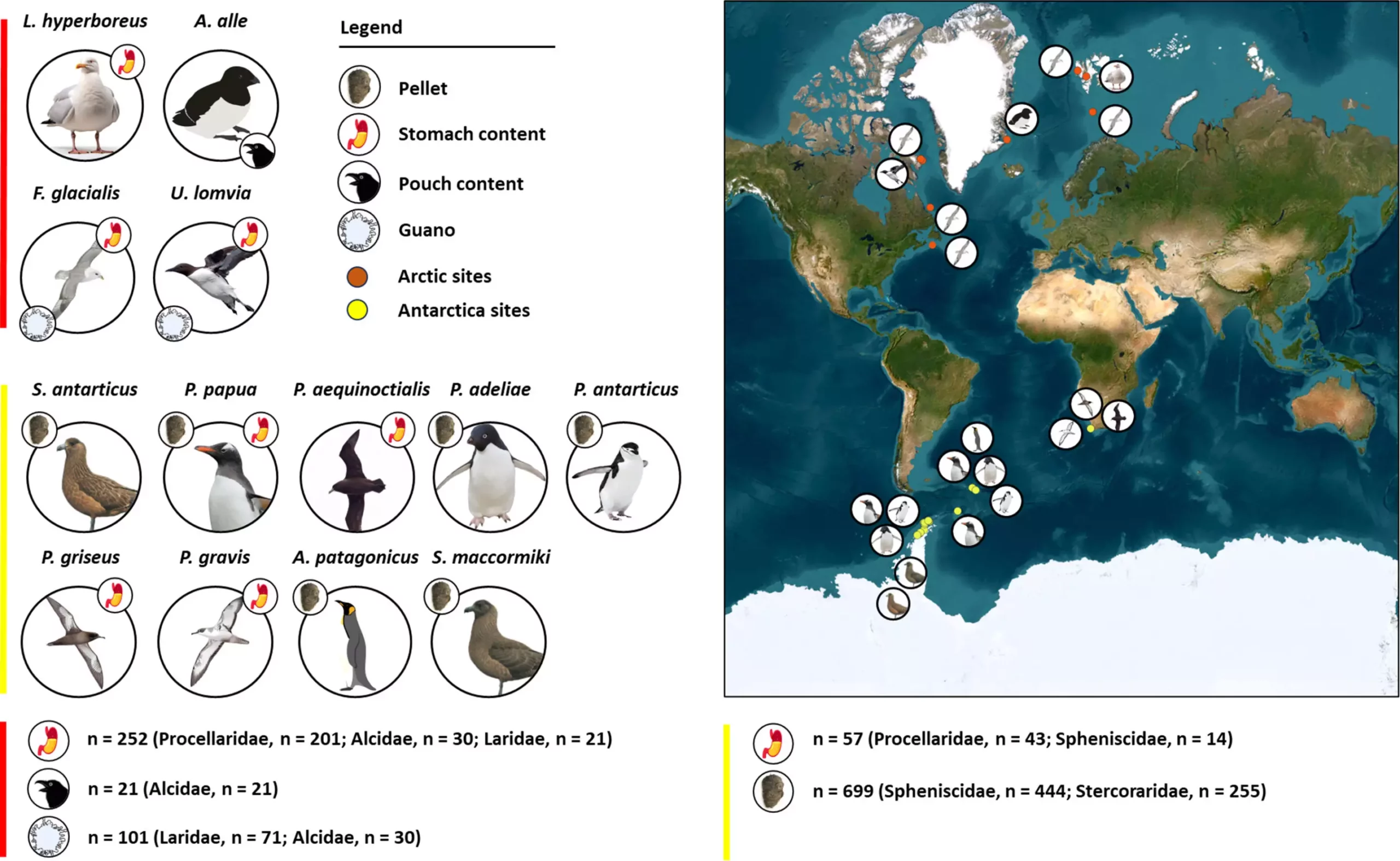The issue of anthropogenic plastic pollution continues to be a global concern, with devastating impacts being felt even in the polar regions of the Arctic and Antarctica. While the common perception of plastic pollution often revolves around images of marine animals trapped in debris, the reality goes beyond what meets the eye. Seabirds, in particular, are facing significant threats due to the ingestion of microplastics and nanoplastics, highlighting the urgent need for conservation measures.
Research Findings
A recent review published in Frontiers in Marine Science delved into 40 years of research on seabird ingestion of microplastics in the polar regions. The study, conducted by Ph.D. researcher Davide Taurozzi and Professor Massimiliano Scalici from Roma Tre University in Italy, examined over 1,100 samples from seabirds residing in the Arctic and Antarctica. The analysis revealed that 13 species of seabirds had ingested microplastics, with alarming findings of at least 1 microplastic particle present in 90% of Arctic samples and 97% of Antarctica samples.
The ingestion of plastic particles poses a range of threats to seabirds, including blockage of their gastrointestinal tract, toxicity, oxidative stress, and immune reactions. The study identified 14 polymer types in the plastic particles ingested by seabirds, with polyethylene, polypropylene, and polystyrene being the most prevalent forms. These polymers are primarily derived from the fragmentation of larger plastic objects such as food containers, packaging materials, and plastic bags.
The presence of microplastics in seabirds is not only a threat to individual birds but also indicates a larger-scale issue in the ecosystem. Microplastics have been found in krill, a vital food source for some penguin species, underscoring the far-reaching consequences of plastic pollution on trophic webs. With the decline in seabird populations in the polar regions in recent years, stricter conservation measures are essential to protect these vulnerable species.
Apart from plastic pollution, the Arctic and Antarctica face a myriad of other environmental pressures. Expedition tourism, commercial fishing, and increased maritime traffic in the North Sea are additional stressors that can have detrimental effects on biodiversity. The impacts of global warming, leading to melting ice and fluctuations in temperature, salinity, and sea levels, further exacerbate the fragility of these ecosystems.
The study highlights the urgent need for concerted efforts to address the environmental stressors facing seabirds in the polar regions. The implications of human activities on these pristine ecosystems serve as a stark reminder that no part of the planet is immune to the effects of anthropogenic activities. As we continue to navigate the challenges of plastic pollution, climate change, and other threats, it is imperative that we prioritize the preservation of biodiversity and the implementation of sustainable conservation strategies to safeguard the natural world for future generations.


Leave a Reply